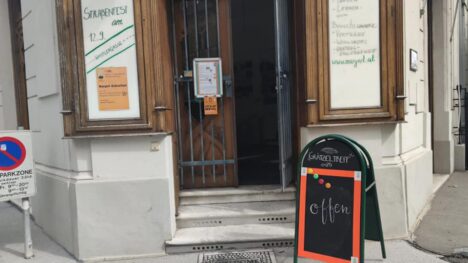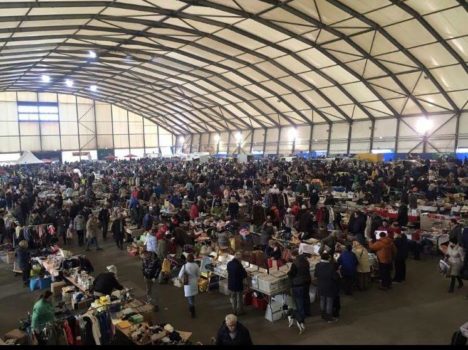Original post by barb on December 7, 2022. Translated by Lisa Scheer in 2023/24.
Disclaimer: Some of the links in this post might redirect you to a site in German. Feel free to use Machine Translation (such as DeepL or Google Translate) to get the information provided on these sites.
A lot of people are looking for the big energy consumers within their house these days. Maybe they will soon focus on their fridge, because it might take a lot of energy to run and because it increases electricity bills. Newer fridges have a relatively low level of energy consumption. But can we even do without a fridge? The following are some thoughts, ideas and alternatives for fridges.
Foods that do not need a fridge
A fridge often just serves as storage space for foods that do not even need cooling or might even do better without cooling. It often comes down to proper storage of foods.
Fruit and vegetables
Vegetables that contain a lot of water, such as cucumbers, courgettes, peppers and tomatoes, and also onions and garlic for taste-related reasons, should be stored outside the fridge. Cabbages, potatoes, sweet potatoes and pumpkins can also be stored in darker, slightly cooler places. The greenery of radishes, carrots and other vegetables should be removed before storing them, because it might take nutrients and water from the vegetable.
With the exception of berries, a lot of fruits also last for longer periods of time outside the fridge if stored properly. How long something stays fresh depends on neighboring foods: apples should be stored separately, because their ripening gas makes other fruit and vegetables go bad more quickly. Pears, bananas, nectarines, peaches and tomatoes are also busy producers of ethylene (ripening substance) like apples. You should not store them with cucumbers, cabbage or carrots, because these vegetables will ripen and spoil more quickly
Tropical fruit, such as oranges, lemons, avocados and more, are no fans of the temperatures within a fridge. They lose a lot of their taste and vitamins. Bananas also prefer the outside of the fridge, such as would do in their natural environment.
A rule of thumb: Store fruit and vegetables in cold and dark spaces. Don’t mix them during storage and store them next to one another instead of above one another. Like this, air can still get to the food and it stays fresh longer.
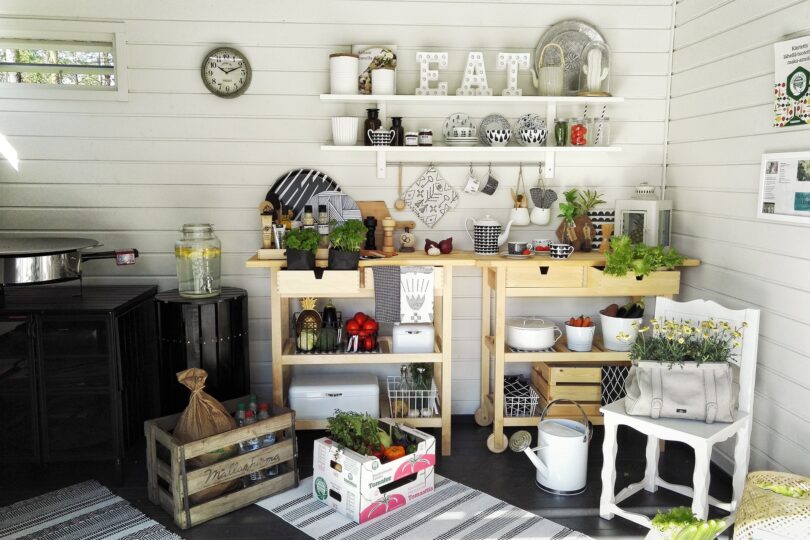
Eggs
Eggs should be kept at room temperature within their cartons, as long as they have not been cooled before. By doing so, they keep their taste. Shelf life: about 18 days. When cooking dishes with raw eggs, use eggs that are as fresh as possible.
Butter, margarine, vegan butter
It has been used in France for a long time to have easily spreadable butter. Now it serves our fridge-free life as well: the French butter dish, a form of butter-cooler. Two containers made out of ceramics and a bit of water help to keep butter slightly cool and easily spreadable. Moreover, butter lasts up to one month. The lower part is filled with cold water and the butter is placed in the upper part. The evaporation of the water cools the butter. Attention: The butter should not be contaminated with crumbs and such.
Cheese
Depending on room temperatures, cheese can be stored outside the fridge for a couple of days. This is best done in coated paper or beeswax cloths. Hard cheese lasts longer than soft cheese.
Sausages
Durable sausages such as salami or Landjäger last for long times due to their way of manifacturing, so they don’t need to be stored inside the fridge.
Mustard, sauces, pickles
These foods are often conserved with oil, vinegar or salt during their production and don’t need additional cooling. It is important to use a clean spoon to prevent contamination and consequently mould. Jams and more should be in the smallest jars possible so that they can be used up over the course of a few days.
To conclude
A lot of foods do not need a fridge if consumed on time. It is more important to properly store and use the food. Meat, fish and dairy products are the most likely to negatively impact our health. It is best to buy those fresh and use them in the same day. It is also helpful to plan your shopping, to not open up too much at once and to prepare the proper amount of food. There are often foods inside a fridge that no one eats. Give away jams and chutneys you don’t eat on time (Foodsharing-Fairteiler) and don’t cool them permanently for no reason.
Storage to keep food fresh longer
Sand boxes
Carrots, celery, beets and other root vegetables can last throughout the winter in a box with slightly moist sand. Remove the greenery of the plants before but leave short leaf attachments. Put or plant the vegetables in the sand with slight distance to one another and store the sand box in a cool, ideally humid and frost-free room (basement, balcony, shed…).
Transition periods
In spring and autumn there often are suitable temperatures to store food on the balcony or outside in the shadows. Food does not like big differences in temperatures and the process of freezing and thawing out. This can lead to the taste suffering from these changes. It would be advisable to check the weather report regularily when using this method. An insolating or cooling box can also help to store foods and keep temperatures stable.
Dairy products and sausages can survive five to seven degrees on a balcony if kept properly sealed. Meat, fish and poultry should only be stored outside up to a temperature of four degrees at maximum. It’s best to store everything in water and airtight boxes or in the original packaging.
Alternatives to fridges
If you keep all the previous tips in mind, you might only need a very small, new, energy efficient fridge for a few sensitive foods and cooled drinks. For garden owners, tinkerers and craftsmen/craftswomen there is a well-known, innovative alternative that functions without electricity.
Earth cellars
If you have a garden available, you already have the prerequisite for a natural, underground cooling space. In rural areas, earth cellars are used today like they were in the past, because earth has a consistent temperature.
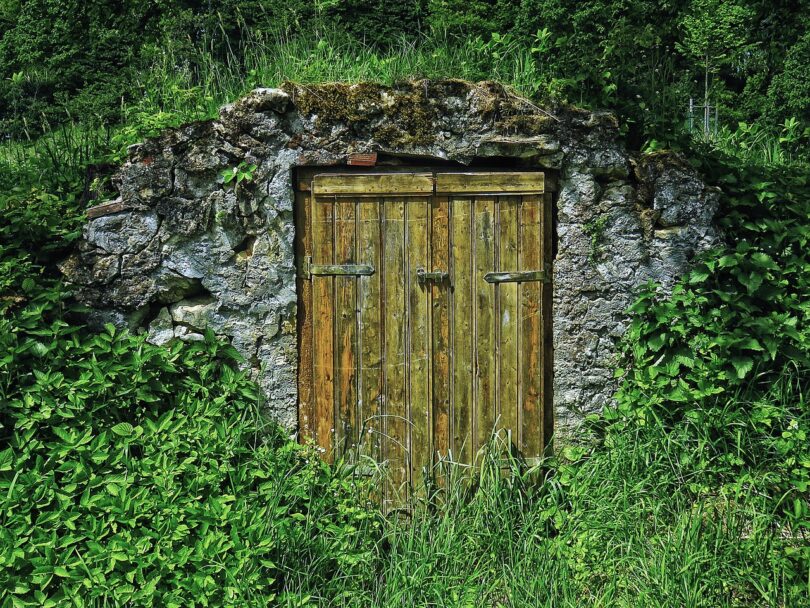
There are various building instructions for smaller and bigger earth cellars online. You can build a whole underground room, but a small hole in which you place a small container or a bucket is also sufficient. Cover everything with a blanket and insulate it with a layer of straw, hay or wood chips. You can also use an old washing drum to put inside the hole. You should put a couple of centimetres of sand or gravel in the hole to help rainwater sicker into the ground. To finish, you can also craft a wooden cover with an insulating layer of Styrofoam.
Evaporation-Fridge
A simple version of an evaporation-fridge that is often used in Africa can be built yourself: A small flowerpot made out of unglased clay can be put inside a bigger flowerpot. The space in between the pots is filled with sand and kept constantly humid with a bit of water. The whole thing is covered with a wet cloth. The fridge is best placed at a place with good airflow, such as a balcony.
„Mitti Cool Fridge“ from India can also be used as an example for a DIY-evaporation-fridge. It is made from clay and has an additional container for drinking water. Water from one of the tanks in the upper part of the fridge trickles down at the sides and creates cool temperatures on the inside through evaporation.
„Save Food From The Fridge“ – Shelf system
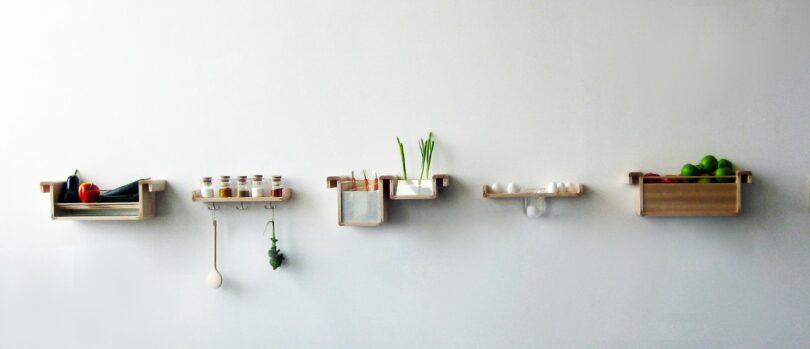
The particular shelf system for food storage by Korean designer Jihyun Ryou is decorative and helps conserve food. Aspects that have been described in this post have been combined here: „Save the Food From the Fridge“ has multiple shelves created in a way that protects food, such as potatoes, from light. Apples are stored above the potatoes. Jihyun Ryou claims that the ripening gas from the apples helps conserve the potatoes. A mini sand box for root vegetables has been made into a shelf here as well.
Sources:
https://praxistipps.focus.de/leben-ohne-kuehlschrank-tipps-wie-sie-lebensmittel-frisch-halten_128327
https://www.hyggelust.de/2018/10/28/ein-leben-ohne-k%C3%BChlschrank-total-verr%C3%BCckt-oder/
https://kleinerleben.de/leben-ohne-kuehlschrank/
https://utopia.de/ratgeber/lebensmittel-frisch-halten-ohne-kuehlschrank/
https://mitticool.com/product/mitticool-clay-refrigerator50-liter/
https://www.mein-schoener-garten.de/lifestyle/essen-trinken/obst-gemuese-das-nicht-den-kuehlschrank-gehoert-44656
https://www.az-online.de/ratgeber/wohnen/kuehlschrank-winter-ausschalten-energie-sparen-lebensmittel-balkon-lagern-zr-91886100.html
https://praxistipps.focus.de/eier-im-kuehlschrank-aufbewahren-oder-nicht-einfach-erklaert_50095
https://www.mein-schoener-garten.de/gartenpraxis/nutzgaerten/gemuese-lagern-4721
https://kuehlex.de/kuehlen-ohne-strom-und-ob-das-geht/
http://www.savefoodfromthefridge.com
https://de.wikihow.com/Topf-in-Topf-K%C3%BChlschrank-zusammenstellen
https://www.smarticular.net/erdkeller-bauen-kartoffeln-aepfel-moehren-lagern-waschmaschinentrommel/
Anmerkung der NiG-Redaktion:
Falls du keine wichtigen Beiträge oder Termine von uns verpassen willst, abonnier doch bitte gerne unseren Newsletter! Er kommt unregelmäßig und nicht zu häufig – versprochen. Oder schau regelmäßig in unseren Veranstaltungskalender.
Wenn dir gefällt, was wir auf dieser Plattform tun, nämlich bereits seit 2017 über Nachhaltigkeit, Umwelt- und Klimaschutz zu informieren, dann unterstütz uns doch bitte auch finanziell, um unsere Website in dieser Qualität und Fülle weiterführen zu können – uns hilft jeder Beitrag!
Verein „Nachhaltig in Graz“
BIC: STSPAT2GXXX
IBAN: AT20 2081 5000 4200 1552
Verwendungszweck: Spende/Sponsoring (Mehr zum Sponsoring hier)
Du kannst dir auch gerne unsere kostenlose App aufs Handy laden, damit kannst du Informationen, Veranstaltungen und vieles mehr entdecken: App Nachhaltig in Graz








